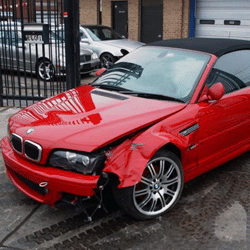When shopping for a new car, safety should take top priority on any list. While gas mileage, price and overall functionality are all important characteristics of any car, your vehicle’s safety features could literally mean the difference between life and death. To make sure your car is as safe as can be, here are five car safety features you should be looking for in your next vehicle.
Seat Belts
Seat belts are fairly standard among any make and model car. They are designed to be strapped on right before any road trip, and keep the driver and their passengers from being pushed violently forward in case of impact. Although air bags and other modern safety features all help in making car users safer on the road, seat belts still do a majority of the heavy lifting. But not all seat belts are created equal. Rear seat belts are an important feature for child passengers, while additional energy management features are important in preventing further injury from the seat belts themselves during impact.
Air Bags
Next to seat belts, air bags are the most common safety feature among cars. Although they serve a different purpose than seatbelts, they work hand in hand in keeping drivers and passengers safe during impact. Air bags deploy during high impact, cushioning the passengers from hitting their head against the dashboard or steering wheel. Curtain air bags located in back of the car, on the other hand, are rear deployed air bags that prevent passengers from hitting the front seat. Side air bags are also becoming just as common in newer car models. They deploy on the sides to prevent impact against the door frame and car window.
Traction Control
Maintaining control during rough and slippery roads could spell the difference between a safe trip and a terrible accident. A traction control system is designed to give tires the best grip on the road. This is particularly useful when driving in wet, muddy or iced terrain. Different cars use different traction control systems, but their core function is the same: to redirect car power to key areas so that the driver can maintain control on the vehicle at all times.
Anti-lock Braking Systems
Brakes are a key component of car safety, but modern automobile technology has allowed engineers to improve on the tried and tested braking system. Anti-lock Brakes, or ABS, is a system that prevents wheel lock-up during emergency stop. When the car is in threat of collision, drivers usually slam on the brakes and end up doing more damage than harm, especially when going at high-speeds. Anti-lock Brakes modulate the brake pressure, preventing the wheels from locking to keep control of the car in the hands of the driver.
Collision Detection Technology
A majority of cars now carry collision detection technology that either warns drivers of impending impact or allows the car to automatically react accordingly. Traditionally, these were used as parking assistance systems, but have since evolved to provide better safety precautions during higher speeds. This technology allows seat belts to tighten, air bags to align and preload brakes to reduce shock upon impact.
While there are a variety of safety features on the market, these are the most important for any car. So when purchasing a new vehicle, makes sure it’s as safe as it is stylish.




 Follow
Follow

